Abstract
Lymphovenous shunts have been detected in patients by lymphography with Ultrafluid Lipiodol. No shunts were found in patients with normal lymphatic systems. They were found in patients with lymphoedema, with lymph nodes involved by malignant disease, and in patients who had had surgical interruption of lymphatic pathways, either vessels or nodes. The total incidence of lymphovenous shunts in 700 lymphographic studies was 2·3%. The incidence in the various pathological groups was highest in those with obvious lymph node involvement.
In certain situations, particularly primary lymphoedema, the role of a lymphovenous shunt appears favourable to prognosis. In other situations a deleterious effect may be produced.
Full text
PDF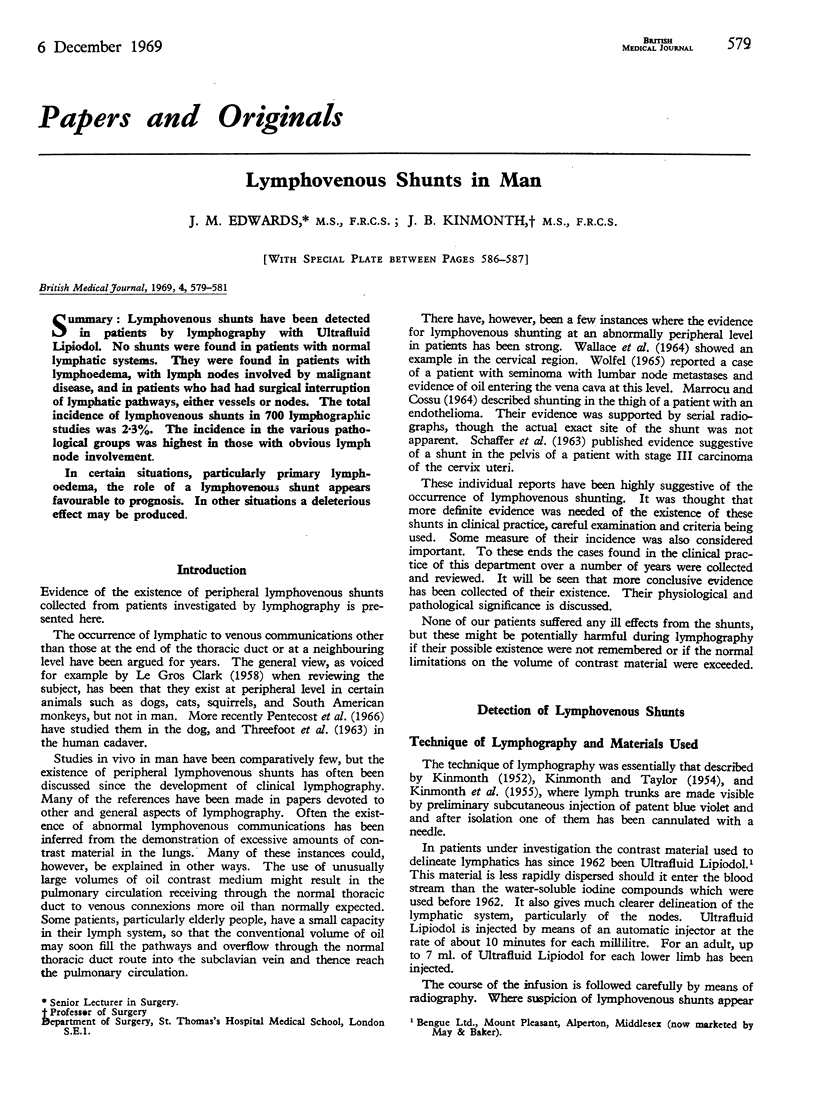
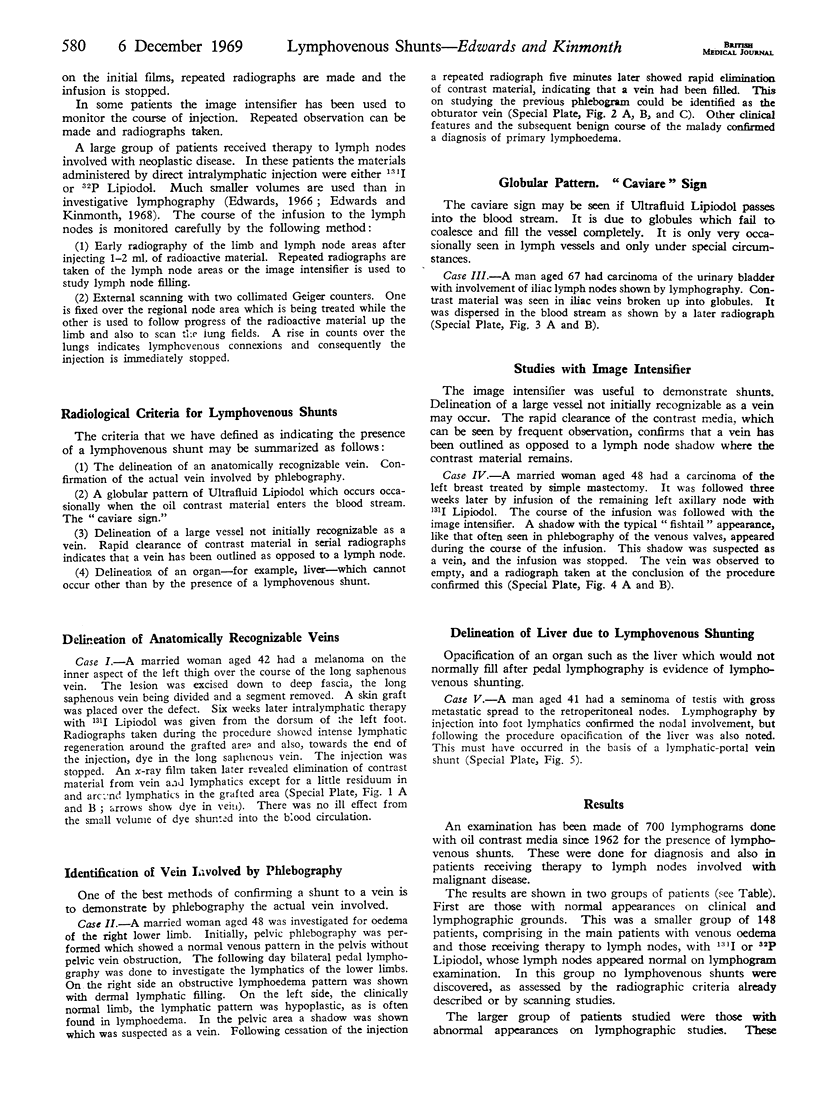
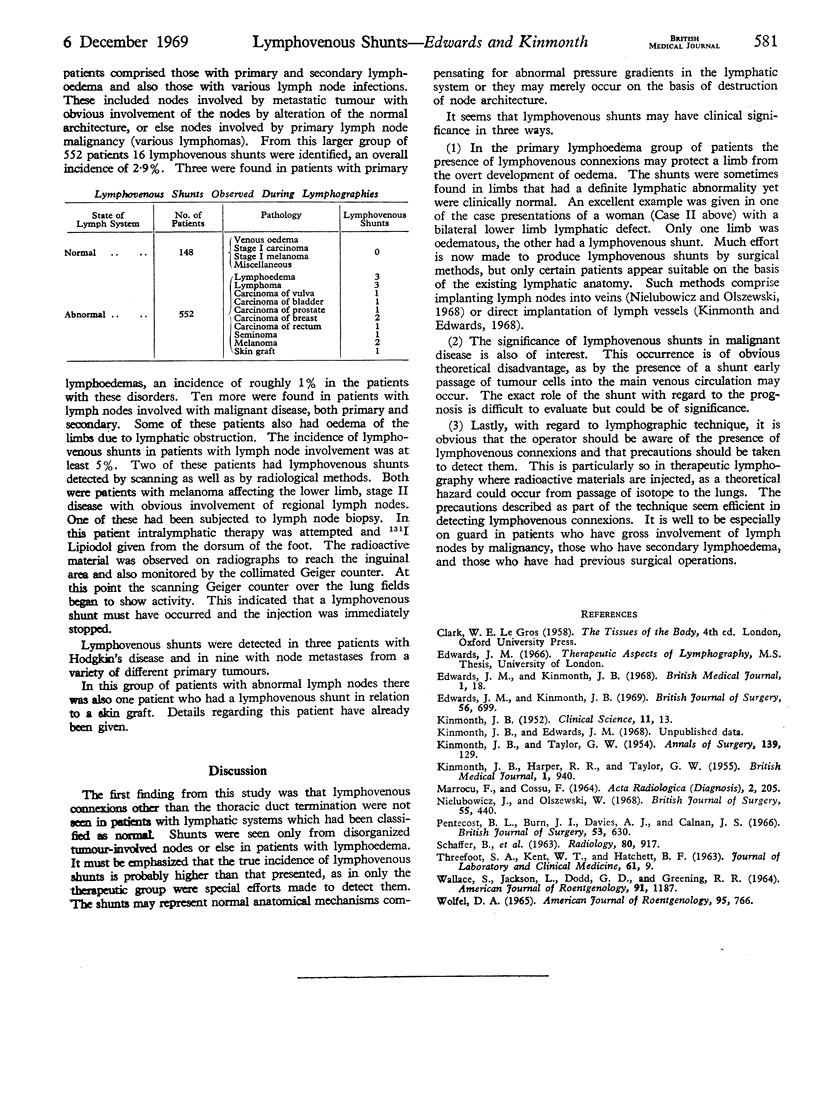
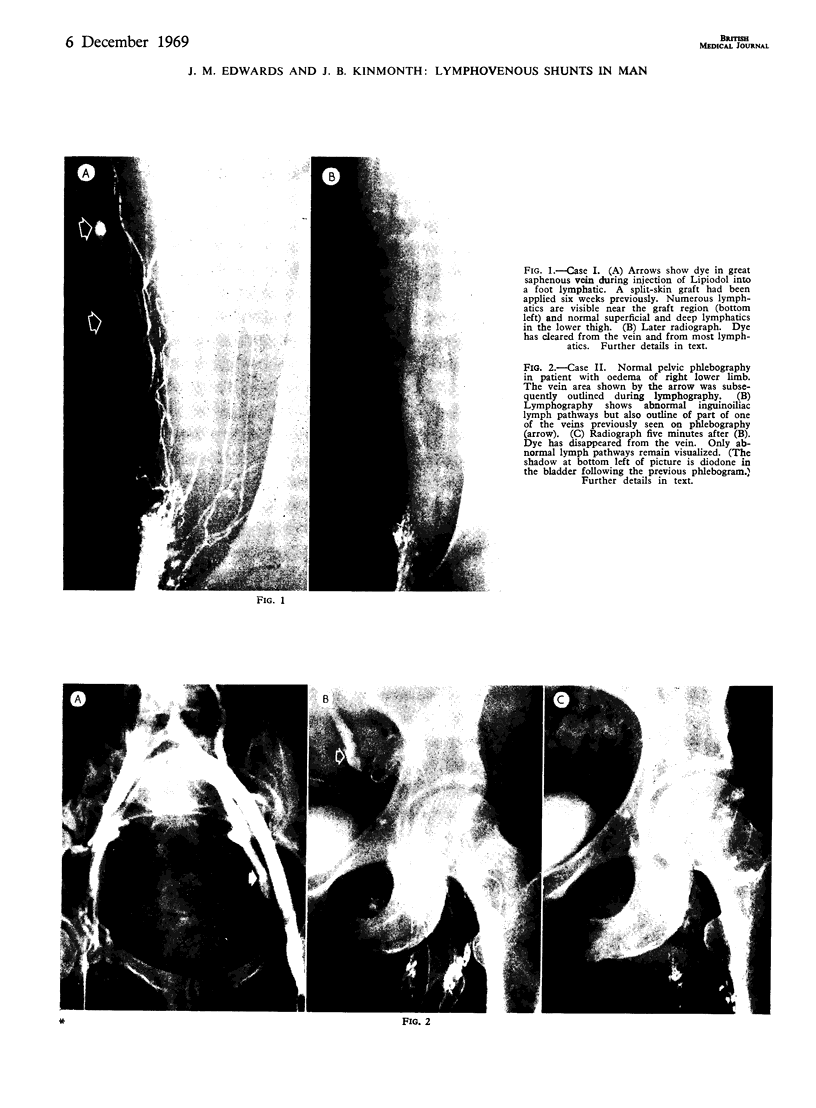
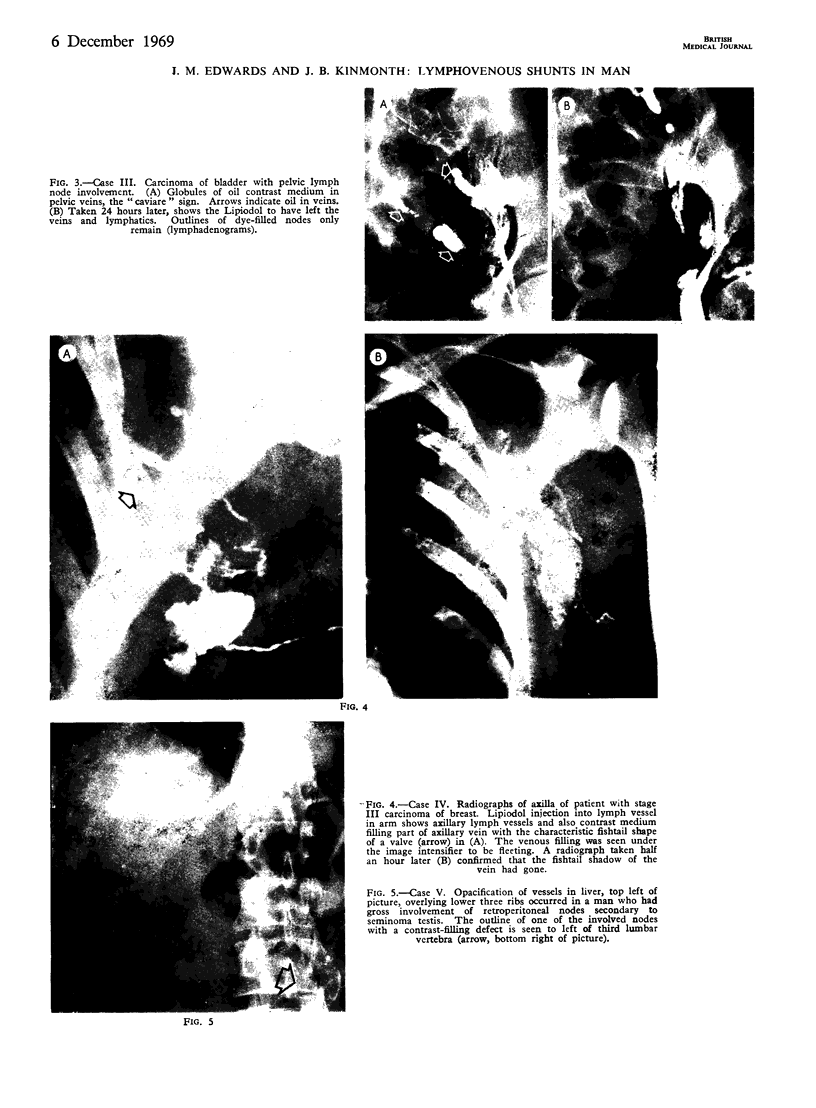
Images in this article
Selected References
These references are in PubMed. This may not be the complete list of references from this article.
- Edwards J. M., Kinmonth J. B. Endolymphatic therapy for malignant melanoma. Br Med J. 1968 Jan 6;1(5583):18–22. doi: 10.1136/bmj.1.5583.18. [DOI] [PMC free article] [PubMed] [Google Scholar]
- Edwards J. M., Kinmonth J. B. Lymphovenous shunts in man. Br J Surg. 1969 Sep;56(9):699–699. [PubMed] [Google Scholar]
- KINMONTH J. B. Lymphangiography in man; a method of outlining lymphatic trunks at operation. Clin Sci. 1952 Feb;11(1):13–20. [PubMed] [Google Scholar]
- KINMONTH J. B., TAYLOR G. W., HARPER R. K. Lymphangiography; a technique for its clinical use in the lower limb. Br Med J. 1955 Apr 16;1(4919):940–942. doi: 10.1136/bmj.1.4919.940. [DOI] [PMC free article] [PubMed] [Google Scholar]
- KINMONTH J. B., TAYLOR G. W. The lymphatic circulation in lymphedema. Ann Surg. 1954 Feb;139(2):129–136. doi: 10.1097/00000658-195402000-00001. [DOI] [PMC free article] [PubMed] [Google Scholar]
- MARROCU F., COSSU F. VENOLYMPHATIC COMMUNICATION OBSERVED DURING LYMPHOGRAPHY WITH AN OILY CONTRAST MEDIUM: A CASE REPORT. Acta Radiol Diagn (Stockh) 1964 May;2:205–208. doi: 10.1177/028418516400200304. [DOI] [PubMed] [Google Scholar]
- Nielubowicz J., Olszewski W. Surgical lymphaticovenous shunts in patients with secondary lymphoedema. Br J Surg. 1968 Jun;55(6):440–442. doi: 10.1002/bjs.1800550609. [DOI] [PubMed] [Google Scholar]
- SCHAFFER B., KOEHLER P. R., DANIEL C. R., WOHL G. T., RIVERA E., MEYERS W. A., SKELLEY J. F. A critical evaluation of lymphangiography. Radiology. 1963 Jun;80:917–930. doi: 10.1148/80.6.917. [DOI] [PubMed] [Google Scholar]
- THREEFOOT S. A., KENT W. T., HATCHETT B. F. Lymphaticovenous and lymphaticolymphatic communications demonstrated by plastic corrosion models of rats and by postmortem lymphangiography in man. J Lab Clin Med. 1963 Jan;61:9–22. [PubMed] [Google Scholar]
- WALLACE S., JACKSON L., DODD G. D., GREENING R. R. LYMPHATIC DYNAMICS IN CERTAIN ABNORMAL STATES. Am J Roentgenol Radium Ther Nucl Med. 1964 Jun;91:1187–1206. [PubMed] [Google Scholar]







